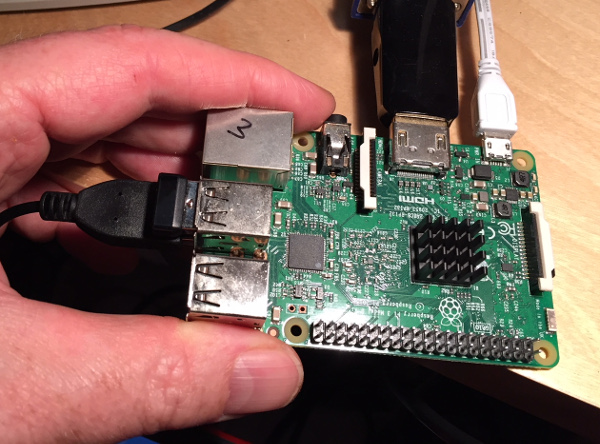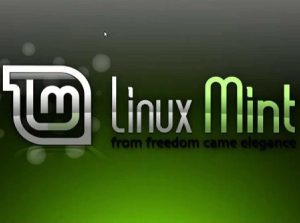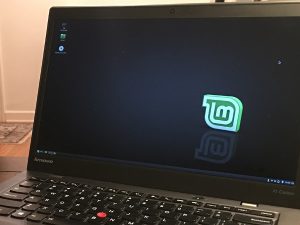These are cheap (£30) mini computers that run Linux and will make a good second computer for children (for example), a media player in another room, or a data server. It might save people buying another laptop and it means you can reuse the peripherals of older PCs (screen, mouse etc).
(NB: see glossary at the end – sorry for scary-looking words, but this really isn’t just for techies).
The development of smaller and less power-hungry processors has meant that microcomputers now present a useful alternative to traditional computers. These are small (credit-card-sized) computers that run a Linux operating system, running versions of most open source software. Raspberry Pi is the best known of these, run on open source software and built by the Raspberry Pi Foundation charity.
Using a MCU cuts down power requirements & packaging. Pi runs on a 5v adapter, like a phone charger, and can plug into a TV (via HDMI) or a computer monitor (via VGA). This means you can cheaply repurpose an old screen or telly. The memory is held on a micro SD card, which is easily transferred between computers. All you need is a mouse and keyboard, and a display (you’ll need an adapter if not using the HDMI connector). The Pi3 is the latest version at time of writing (Oct 2017), and will often come in a kit with a power supply and ‘Noobs’ operating system on a micro SD card.
The pi can act as a media player, playing films or music. It will run a browser for internet access & has a multitude of more specialised software. It has output ‘pins’ which can be controlled by software, allowing interfacing with sensors, LEDs or displays for those who like to tinker. Shields are boards that plug in to give extras like high-quality audio output.
Pi lets you do clever things like setting up your own server – like your own private dropbox, with the data kept away from the internet, for any computer in your house to access, either password protected or freely available for all to read and/or edit.
Sharing files between computers is easy with any version of Linux. A utility called samba lets you set sharing preferences and access rules for folders easily. Any computer on your network can see a shared folder, and you can decide who can see and who edit which files.
Pi is best as a cheap second computer, ideal for experimenting and cheap to buy and run, at 1/10th the price of a cheap laptop. It’s not great as a main workstation for anyone who regularly moves between different software, or has lots of tabs open, as it can take a while to switch between apps. It will happily run a browser, open a spreadsheet or play music, but if you’re used to doing all these things at the same time you might find it a bit slow. It has interesting software like Scratch and Sonic Pi which make basic coding skills accessible even to young children. There is a thriving user community and the free MagPi magazine offers lots of projects to explore. If you have an old display somewhere, a keyboard and a mouse – less than £50 will get you a versatile working computer.
https://www.raspberrypi.org/ is a very good place to start. Basic info on how to set one up, for non-nerds.
Pi 3 is the bigger one, pi zero the really small one. My hand only there for scale.
These are real computers. Crazy.

Glossary
MCU: microcontroller unit – this is a multifunction chip. The chip on a pi does all the network interfacing, graphics etc, which is how it gets on such a small board (normally computers have separate chips to do all these things – hence they’re big & power hungry).
HDMI: high-definition media interface. It’s the standard connector for DVDs, TVs, laptops & monitors in the last few years. Shaped like a rectangle which has had 2 corners blunted off (similar size to a USB port). There’ll be one on the side of your computer if it’s less then 5 years old, probably.
VGA: the standard before HDMI – slightly lozenge shaped connector on the side of your laptop, probably. 3 rows of holes.
Micro SD card: SD cards are pretty standard for memory in cameras – range between 2Gb & 64Gb size (a DVD is 4Gb, for reference). Micro SD cards have taken over – they fit in an adapter so they can go into normal SD card slots, but lots of things these days just use the micro SD card format.







3 Comments
The Pi doesn’t run on Linux as the title suggests, Linux runs on the Pi. We’re talking computers here, such a detail makes a massive difference!
Next you’ll be telling me you saw something in the Internet! Though I do have a stack of old CD’s on a network switch here, so maybe you could have, come to think of it…
Yes, the author just told me about my mistake. I’ve changed it – still might be wrong tho. Let me know.
That’s the puppy! 😉